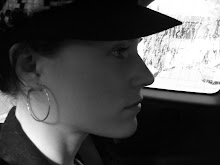As the name Digital Storytelling implies, it is basically students telling a story using digital media, including the use of images, music, narrative and voice. What better way to encourage our digital learners to write! Not to mention pushing the boundaries of their imaginations.
Narratives and short story writing are core content of English curriculum. Digital Storytelling allows this content to be transfered into the digital age, engaging our learners and creating in them a whole new set of literacy skills - digital literacy! Learners still need to thoroughly plan their story and write a 'script' that includes all the elements of a narrative BEFORE even thinking about storyboards and taking photos, meaning it is still a literacy-rich task.
The fact that it is storytelling alone makes it perfect to integrate with the Learning Engagement Theory. Learners can plan and produce (Create) their narratives/stories in pairs (Relate), and then share them to an audience in a 'film festival' for thier parents or a buddy class etc.
The other greate thing about Digital Storytelling is that it should not be too difficult. Learners plans and take their photos then load them onto the computer. They can then use a free photo editing tool, such as Picnik to manipulate their images as desired. Then, each 'frame' can be created in PowerPoint, by saving each slide as a GIF or JPEG. Once this is done, the frames can be imported into Windows Photo Story 3 (which is free to download) to start making it into a 'film' with music and voice overs. Audacity is a great voiceaudio recording and editing tool that is simple to use and free to download. Also, for Royalty Free Music, learners can download music from Incompetech.
To me, this is a very straight-forward and great tool for student-centred learning.
Subscribe to:
Post Comments (Atom)

No comments:
Post a Comment